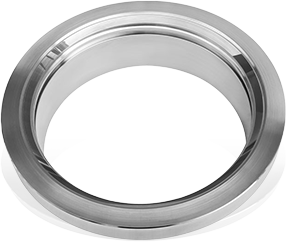The chemical industry demands reliable and durable components for fluid control systems, and industrial ball valves play a critical role in these processes. Ball valve components must meet stringent requirements to withstand harsh chemical environments, ensure safety, and maintain operational efficiency. This article explores the specific needs for ball valve components used in chemical applications and outlines practical solutions, focusing on the design and functionality of ball valve assemblies.

Key Requirements for Ball Valve Components in Chemical Applications
Chemical Resistance and Material Compatibility
One of the primary requirements for ball valve components in the chemical industry is resistance to corrosive substances. Industrial ball valves are often exposed to aggressive chemicals, acids, solvents, and high-temperature fluids. Therefore, the materials used in the valve assembly—including the valve body, ball, seats, and seals—must be compatible with these substances to prevent degradation and leakage.
Materials such as stainless steel, Hastelloy, and specialized alloys are commonly used due to their corrosion-resistant properties. For sealing components, fluoropolymer-based materials like PTFE (polytetrafluoroethylene) or PEEK (polyether ether ketone) are preferred for their chemical inertness and thermal stability.
Pressure and Temperature Ratings
Chemical processing plants typically operate under varying pressure and temperature conditions. Ball valve components must be engineered to withstand these conditions without compromising performance. The valve assembly needs to maintain sealing integrity under high pressures and resist deformation or material failure at elevated temperatures.
Valve manufacturers usually provide pressure-temperature ratings specific to each component, ensuring that industrial ball valves are selected based on their suitability for the intended application environment.
Leakage Prevention and Safety
Safety is paramount in chemical industries due to the hazardous nature of many fluids handled. Ball valve assemblies must provide reliable shut-off to prevent leaks that could advance to environmental contamination, equipment damage, or personal injury.
To enhance sealing performance, ball valve components are designed with precision-machined seats and resilient seals that create tight contact with the ball. Some assemblies incorporate double or triple sealing systems to provide additional barriers against leakage. Additionally, valve designs may include features such as fire-safe construction to maintain integrity during emergency conditions.
Operational Efficiency and Maintenance
In chemical plants, process uptime and efficient operation are essential. Ball valve components should facilitate smooth operation with small torque requirements to open and close the valve. The design of the valve assembly should also allow for easy maintenance, such as replacing seats or seals without removing the entire valve from the pipeline.
Valve components that support modular assembly and disassembly reduce downtime and lower maintenance costs. This is particularly important in industries where process interruptions can be costly.
Solutions for Ball Valve Components in Chemical Industry Applications
Material Selection and Coating Technologies
Choosing appropriate materials for ball valve components is the foundation of effective chemical resistance. Stainless steel grades like 316 or duplex stainless steel offer good corrosion resistance for many chemical media. For more aggressive environments, alloys such as Hastelloy C-276 provide higher resistance to oxidizing and reducing agents.
In addition to base materials, advanced coatings such as PTFE or ceramic liners can be applied to the valve ball or body surfaces to extend service life and reduce friction. These coatings improve resistance to abrasion and chemical attack, enhancing the overall durability of the valve assembly.
Enhanced Sealing Systems
The ball valve assembly's sealing elements are crucial in maintaining leak-tight performance. Use of high-performance elastomers or fluoropolymers ensures that the seats and seals can tolerate chemical exposure and temperature fluctuations.
Some ball valves incorporate spring-loaded seats that maintain contact pressure on the ball, compensating for wear and thermal expansion. This design reduces leakage risk and improves valve longevity.
Precision Manufacturing and Quality Control
High-quality manufacturing processes ensure the dimensional accuracy of ball valve components, which directly impacts sealing performance. CNC machining allows for tight tolerances on the ball and seats, enabling smooth rotation and consistent contact.
Quality control procedures such as pressure testing, leak testing, and material inspections are essential to verify that each valve assembly meets the required specifications for chemical industry use.
Modular Design for Ease of Maintenance
Modular ball valve designs allow components like the ball, seats, seals, and stem to be serviced individually without removing the valve body from the pipeline. This feature less downtime and facilitates routine maintenance or part replacement.
Such design considerations support continuous operation in chemical plants and reduce labor costs associated with valve upkeep.
Compliance with Industry Standards
Ball valve components for chemical applications must comply with relevant standards that govern pressure ratings, materials, and safety requirements. Adherence to standards such as API, ANSI, and ISO helps ensure the valves perform reliably within chemical process systems.
Regular audits and certifications provide additional confidence that the valve assembly meets operational and safety requirements.
The chemical industry's demanding conditions require ball valve components that are durable, safe, and efficient. Industrial ball valves used in chemical processing must combine material resistance, precise manufacturing, reliable sealing, and serviceability to meet these requirements.
Solutions such as selecting corrosion-resistant materials, enhancing sealing systems, and employing modular designs contribute to the effective functioning of ball valve assemblies in chemical environments. By focusing on these factors, manufacturers and users can ensure their valve components support safe and uninterrupted chemical processing operations.